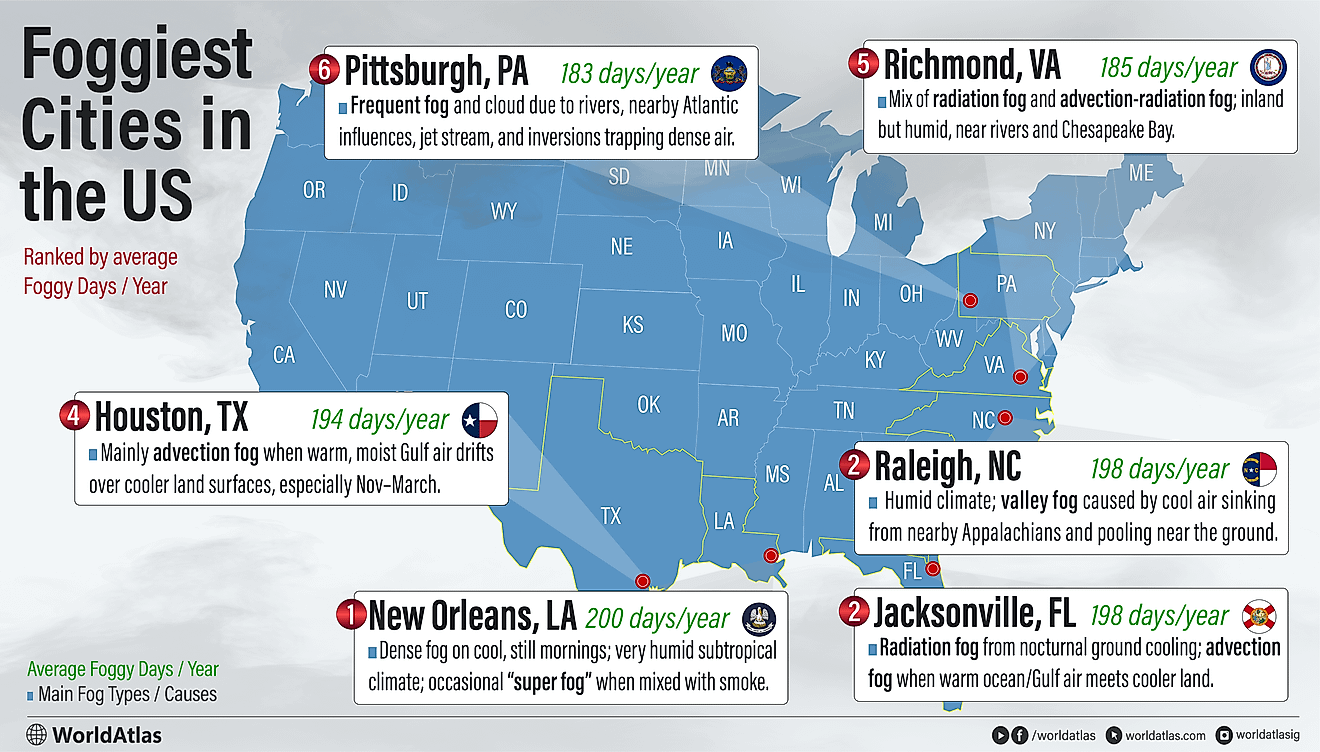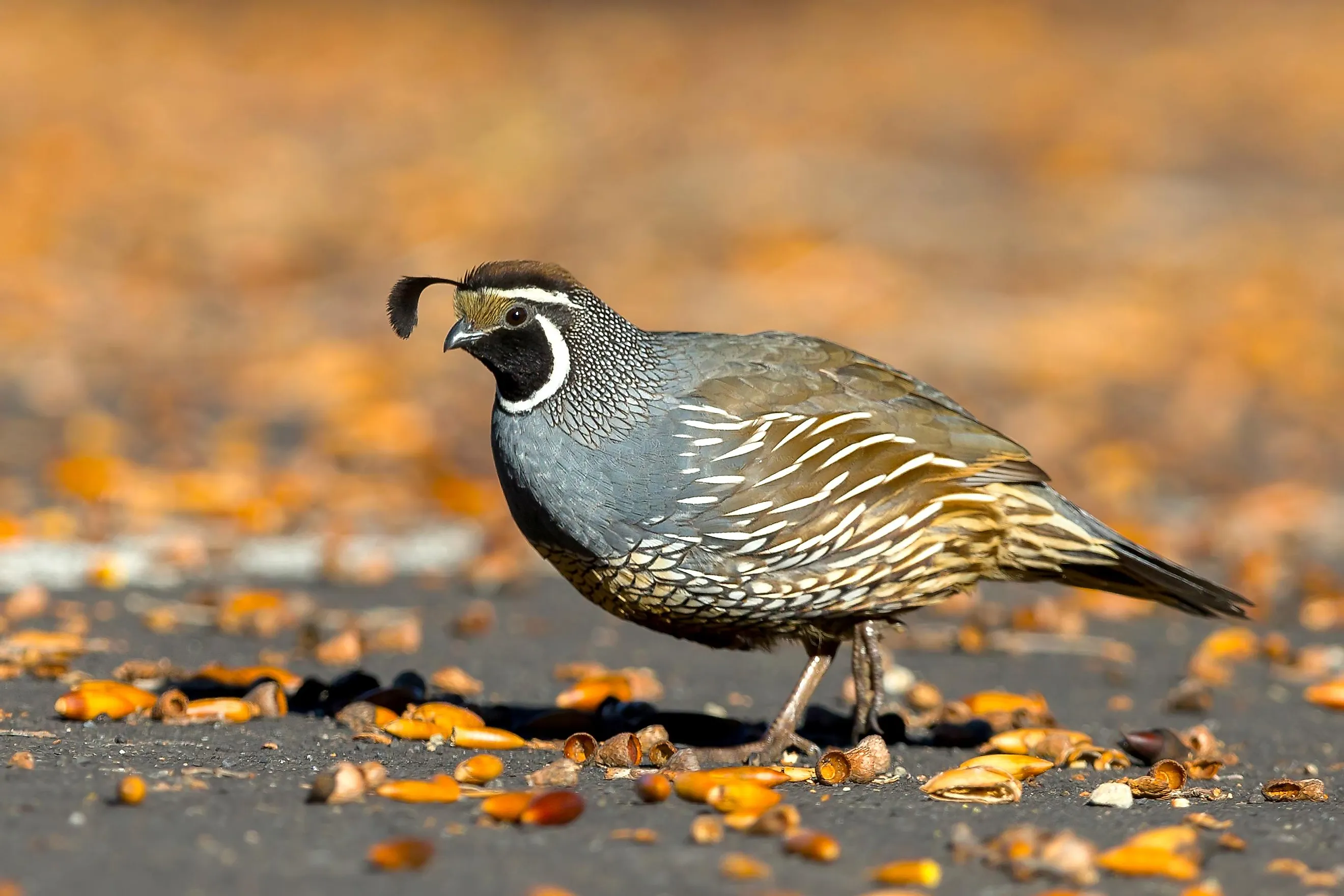
Birds Of California
California is a bird-watcher's dream state. Some 673 species have been spotted on off-shore islands, throughout coastal habitats, in inland waterways, amongst mixed forests, chilling in backyards and local parks, and the list of unique, bird-friendly ecosystems that the Golden State supports goes on and on. There are colorful songbirds, intriguing predators, seasonal visitors, and everyday residents – all able to find their niche amongst (or far removed from) the major population centers of America's most populous state. While there are too many winged wonders to discuss in one go, here are a few standout birds of California, followed by hot tips on where to go to see the most species congregate together.
California Quail
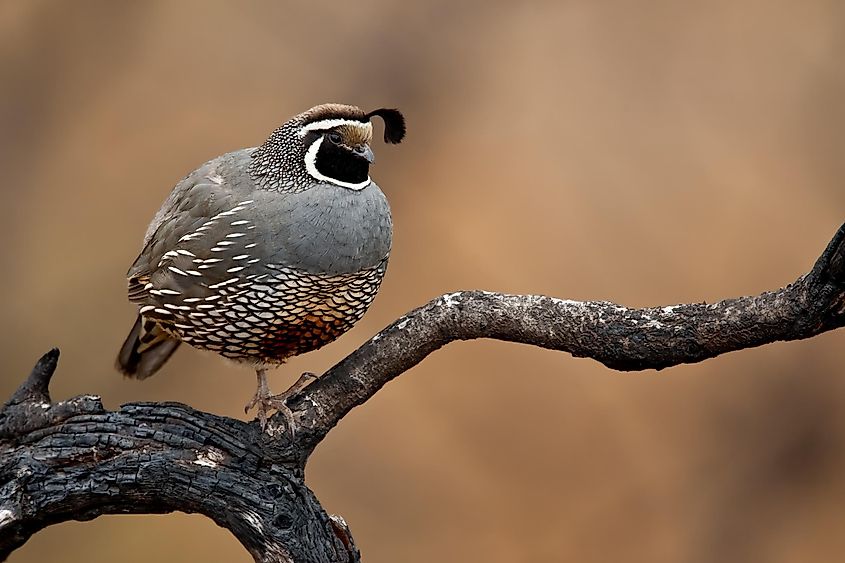
Let's start things off with the official state bird of California. The California quail (Callipepla californica) inhabits much of the Pacific Northwest but shows a propensity for the wide range of environments offered by the Golden State. This short, rotund species seeks oak woodlands, sagebrush, chaparral, and other forests within the foothills of mountains but is also happy to inhabit city parks and suburban gardens. They prefer to walk rather than fly, as they forage for seeds, fruit, and insects during the bookends of the day. With that said, they are certainly capable of short airborne bursts when they want to seek cover. Males are the more decorated sex, sporting large comma-shaped crests on the top of their heads, richer browns and gray on their bodies, and a bold black throat bordered by a stark white line. Despite its designation (which passed in 1931 after a nomination by the Audubon Society), the California quail is a game bird, open to hunters at different times of the year depending on the exact region in question (California is divided into three zones).
California Condor
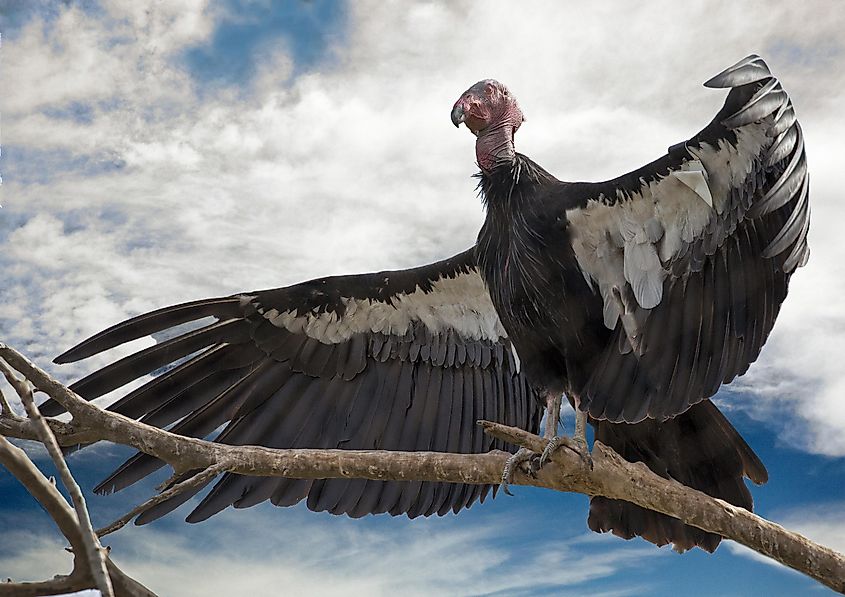
Another one of California's namesake birds just so happens to be the largest flying bird in North America. The California condor (Gymnogyps californianus) has a maximum wingspan of 9 to 10 feet and can weigh up to 25 pounds. Despite its size, it can glide on air currents up to 15,000 feet. This arresting bird of prey used to dominate the skies of the entire continent but has since been relocated to Central California (Big Sur, in particular, provides viewing opportunities), a small part of the Four Corners region, and a pinch of the Baja Peninsula. In 1987, the last wild condor was captured (for the sake of a breeding program), capping the (known) remaining population at a mere 27. After successful reintroduction, the wild population now stands at about 300, with another 160 still managed in captivity. Despite improvements to the situation, the California condor is listed as "critically endangered" on the IUCN Red List. And even though it is a federally-protected species, these vultures remain susceptible to human-caused environmental hazards – namely, lead poisoning, pesticides, and powerlines.
California Scrub-Jay
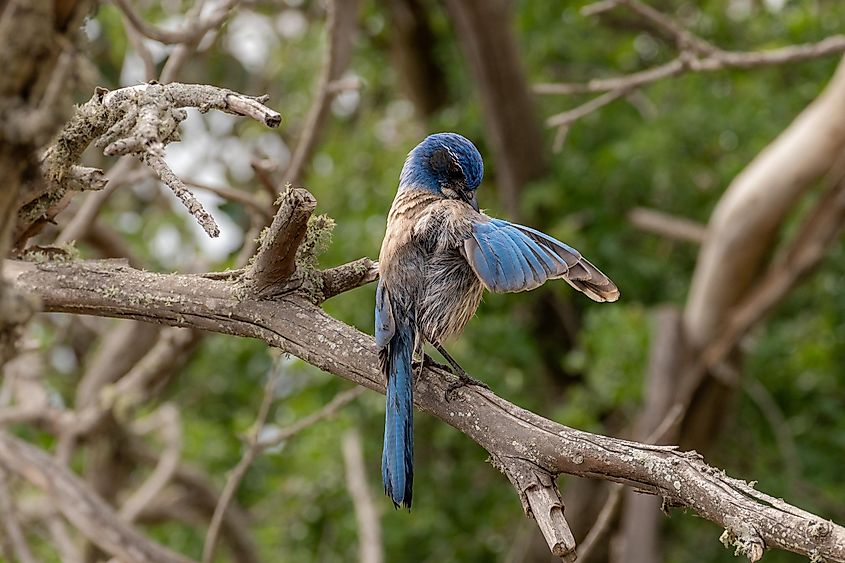
One last eponymous bird to add to the Golden State watchlist is the California scrub jay (Aphelocoma californica). Commonly referred to simply as a "blue jay," this spritely songbird easily captures one's attention. Not only does its bold blue body and long tail stand out in contrast to its white underside, but its highly vocal, curious, and even assertive behavior can be a delight to observe. California scrub jays enjoy the state's open coastal and foothill regions and can be spotted in such habitats as chaparral, oak woodland, pine forests, and, of course, scrub. They also like to partake in backyard bird feeders and perch high on posts, in trees, or on wires – giving us ample opportunities to observe them. One of the more fascinating behaviors the scrub jay exhibits is its habit of burying upwards of thousands of acorns for later ingestion. And I can't even remember where I put my keys half the time.
Yellow-Billed Magpie
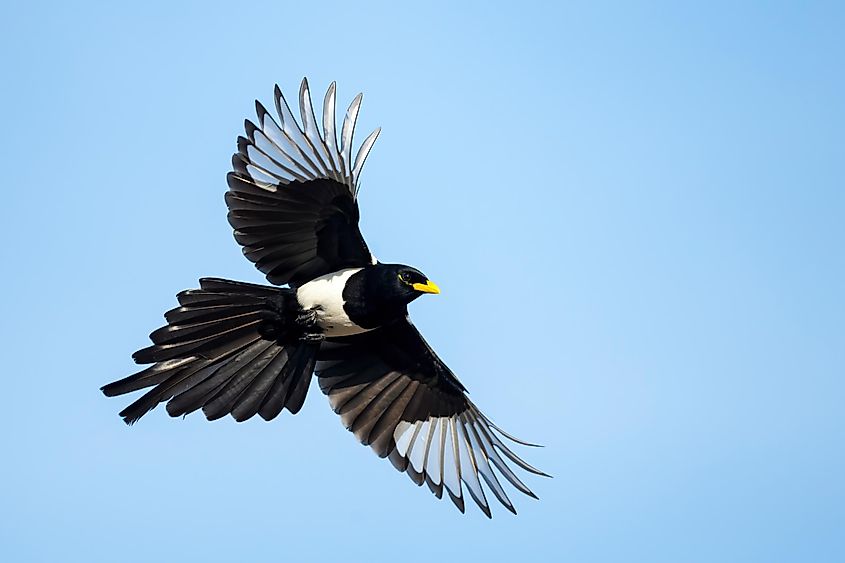
It may not be named after the state, but the yellow-billed magpie (Pica nuttalli) is endemic to Central California. Its black-billed cousin lives throughout Europe, Asia, and North Africa, but this particular subspecies only inhabits the open, rural valleys within a 500-mile-long, 150-mile-wide area covering the Central Valley, Coastal ranges, and Sierra Nevada foothills. Specifically, yellow-billed magpies gravitate toward the oak savannas, oak woodlands, riparian areas, meadows, and farms – choosing to nest in small colonies within tall trees. This chatty bird is usually between 18 - 24 inches tall, with a wingspan of about 23 to 26 inches, and exudes a beautiful combination of a black and white body, with shimmering blues and greens on the wings and tail, capped off with the bright yellow beak after which it takes its name.
Sandhill Crane
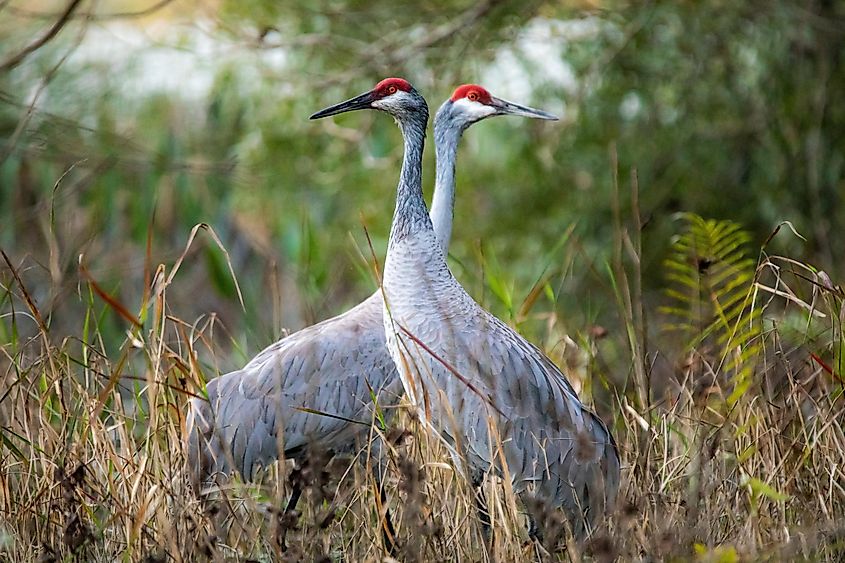
While California offers a suitable year-round home for many birds, there are others that choose to migrate here during opportunistic seasons. The sandhill crane (Antigone canadensis), for example, breeds in Alaska, Northern Canada, and Siberia, as well as Northeastern California and South-Central Oregon (depending on the subspecies) during the summer and flocks to Central California (places such as Cosumnes River Preserve, Staten Island, Merced National Wildlife Refuge, Pixley NWR, and Carrizo Plain), for the winter and spring. They travel by the thousands (usually amassing a seasonal Californian population of about 250,000) and are capable of covering hundreds of miles each day. Sandhill cranes are also one of the world's oldest living species of birds. Fossils have been found that predate the earliest remains of most birds by millions of years. Famously, sandhill cranes engage in an entertaining courtship, performing a mating dance, projecting loud croaking calls, and tossing tufts of grass into the air.
Tufted Puffin
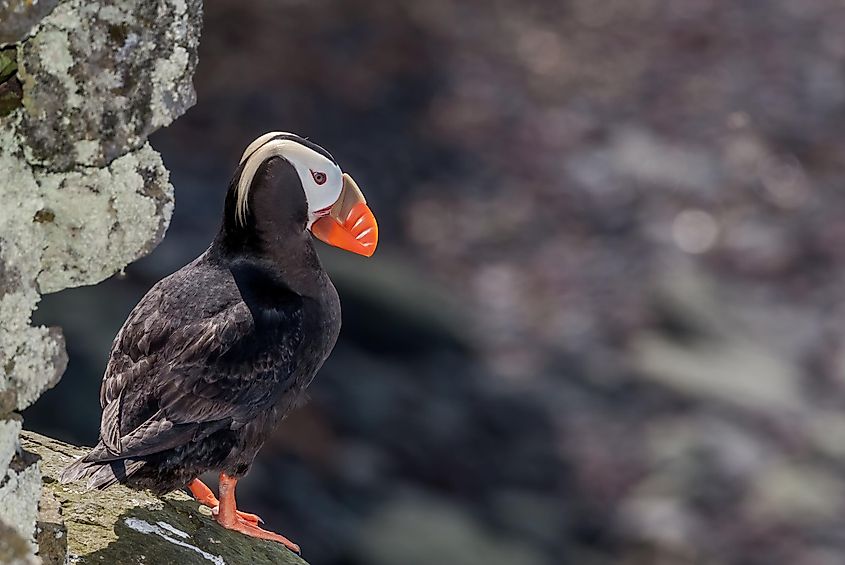
Given its lengthy coastline, it makes sense that California would attract its share of interesting seabirds. The adorable tufted puffin (Fratercula cirrhata) is one of the standouts – immediately recognizable by its sizable orange-red bill and feet, white mask, and (during breeding season) flowing pale-yellow head plume; all contrasted against a black body. These birds are well-adapted for swimming and spend the majority of their lives in the open ocean (Pacific and Arctic). They make their way closer to shore only during the breeding season (i.e., March to May, but typically April), where they dig burrows deep into the cliff sides of off-shore islands (anywhere from Northern California all the way up to Alaska). The best way to spot them is by taking a boat tour, and it certainly won't hurt to have a good pair of binoculars.
Bird-watching In California
With such a diverse range of ecosystems and welcoming weather year-round, every day and every place provides bird-watching opportunities. One needs only to step into their backyard, walk to the nearest park, or venture to the closest trail system. With that said, there are some jackpot hubs worth making a special trip for, in addition to the sights already mentioned above.
Point Reyes National Seashore
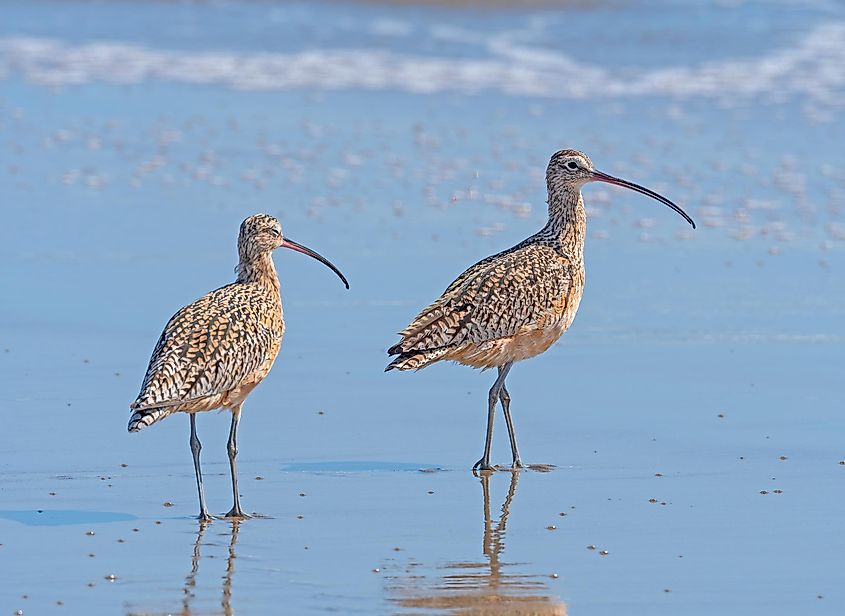
Birders of San Francisco and Santa Rosa can meet halfway on the Point Reyes National Seashore, where 490 species have been cataloged over the years (that's about half of the known North American species). A short hike into Abbotts Lagoon is likely to reveal multiple subspecies of grebes, as well as Caspian terns, black-shouldered kites, and coots, or jump on the nearby Estero trail, to add great egrets and great blue herons (and maybe even a long-eared owl or two) to the bounty.
Elkhorn Slough/Moss Landing
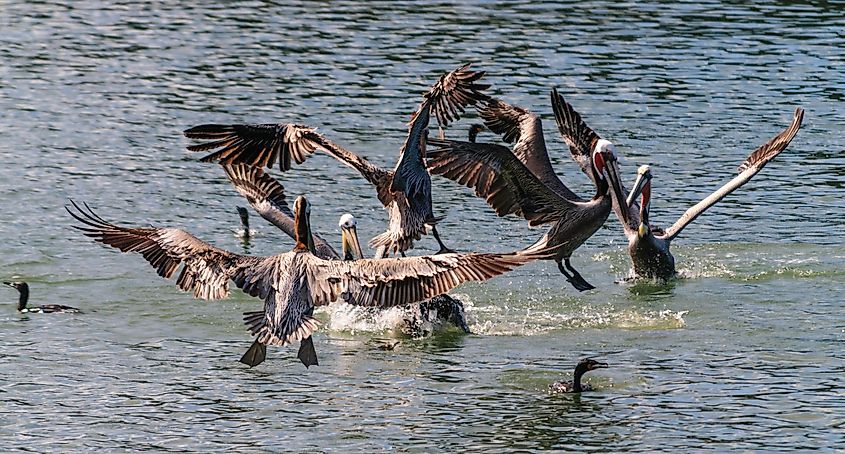
Another bird-watching paradise on California's Central Coast is Moss Landing State Wildlife Area and Elkhorn Slough State Marine Reserve – both located on the Elkhorn Slough waterway and its corresponding channels that extend inland from Monterey Bay. This collection of wetlands attracts over 340 species of shorebirds and waterfowl, both resident and seasonal, thriving and threatened/endangered (such as the California clapper rail, peregrine falcon, and California least tern). The Great horned owl, one of California's most beautiful wild animals, also nests in these parts.
Big Morongo Canyon
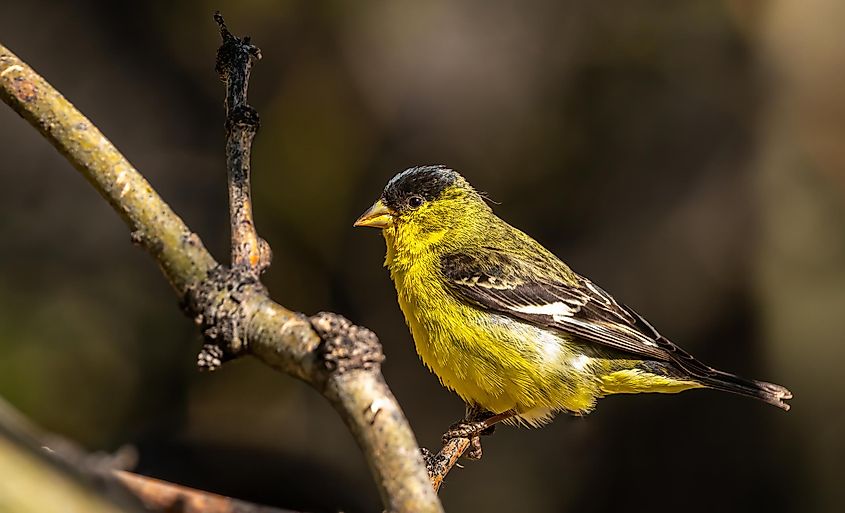
Bringing the scouting mission inland, just a smidge North of Palm Springs, on the Western edge of Joshua Tree National Park, Big Morongo Canyon has hosted over 250 species of birds in the wetlands surrounding Big Morongo Creek. Thanks to a wooden boardwalk, visitors can get within range of various hummingbirds, house finches, and song sparrows (to name a few).
Salton Sea
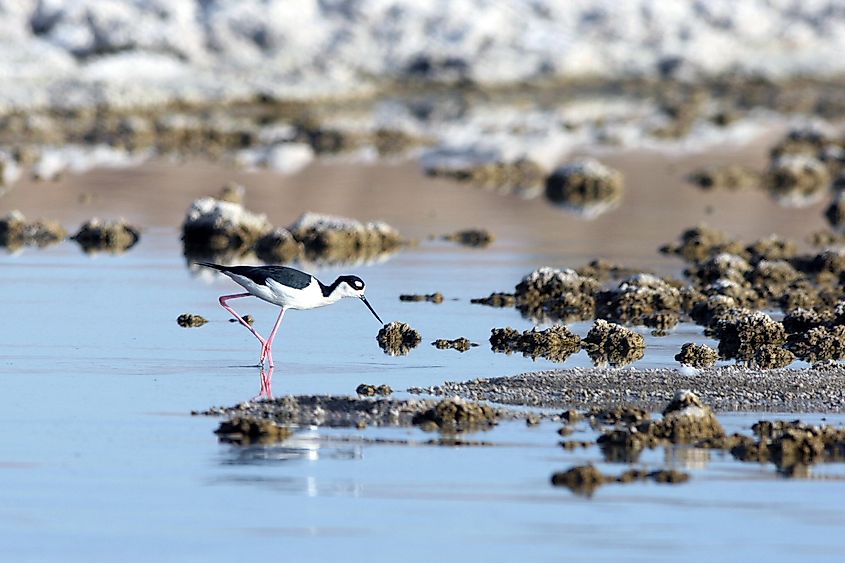
Southern California provides an easy double-header for weekend birders. The Salton Sea is only about an hour South of Big Morongo Canyon and also sees in excess of 100 species – some arriving in enormous groups. This artificial and potent saline reservoir formed after dams on the Colorado River burst in the early 1900s. The silver lining is that it started to attract over one million grebes and thousands of American avocets in the winter. And in the summer, this is one of the only places in America to spot the yellow-footed gull. Other regular features include the white pelican, burrowing owl, mountain plover, black terns, and gull-billed terns.
Bird-Watching Etiquette
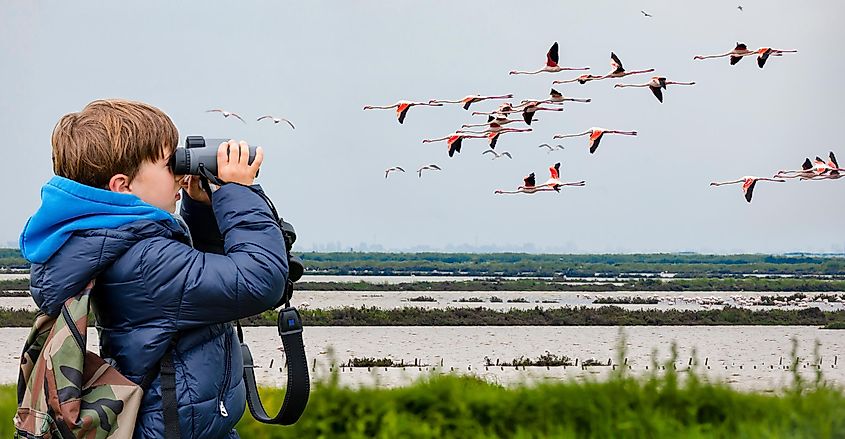
- If you're new to bird-watching, be mindful of the impact that your presence may have on the very objects of your admiration. As with all wildlife, maintain a safe and respectful distance. When it comes to birds, this includes their nests.
- Mastering the art of patient movements (or complete stillness) will not only improve your chances of success but will reduce the chances of accidentally startling nearby birds.
- Uphold the "watching" part of bird-watching. Naturally, attempting to touch birds or interact with them in any way could harm or at least alarm them. With the exception of clearly established domestic settings, this includes feeding them.
- And lastly, practicing the Leave No Trace principle will help ensure a clean and healthy environment for future generations of birds and budding bird-watchers alike.
Researching the birds in your area is a great way to learn about the ecology and gain an appreciation for the tree of life. Since California has 450 commonly-seen avian species (and hundreds of other rarely-spotted varieties) a thorough review would rival a PhD program. So maybe start with some of the birds and bird-watching places mentioned today, and let your curiosity and binoculars guide you from there. The more Californians that are out there observing and cataloging the unrivaled biodiversity of their state, the more momentum will be generated for protecting these brilliant birds and the environments they rely on.











